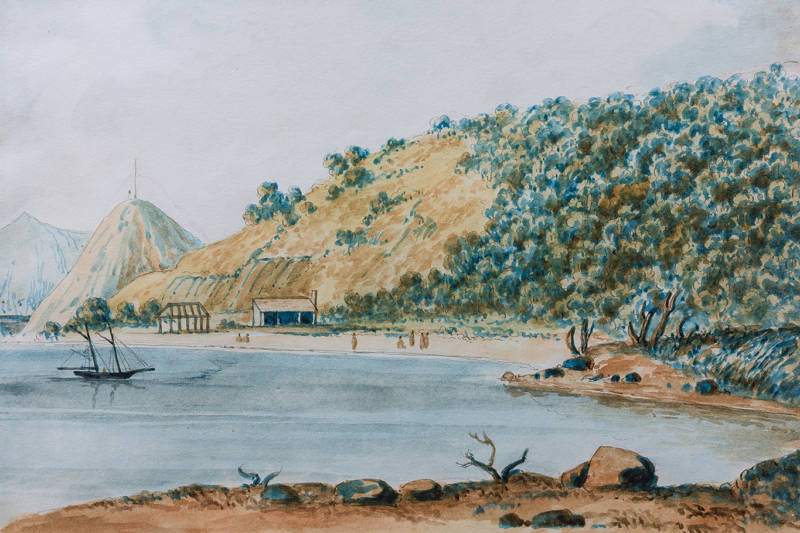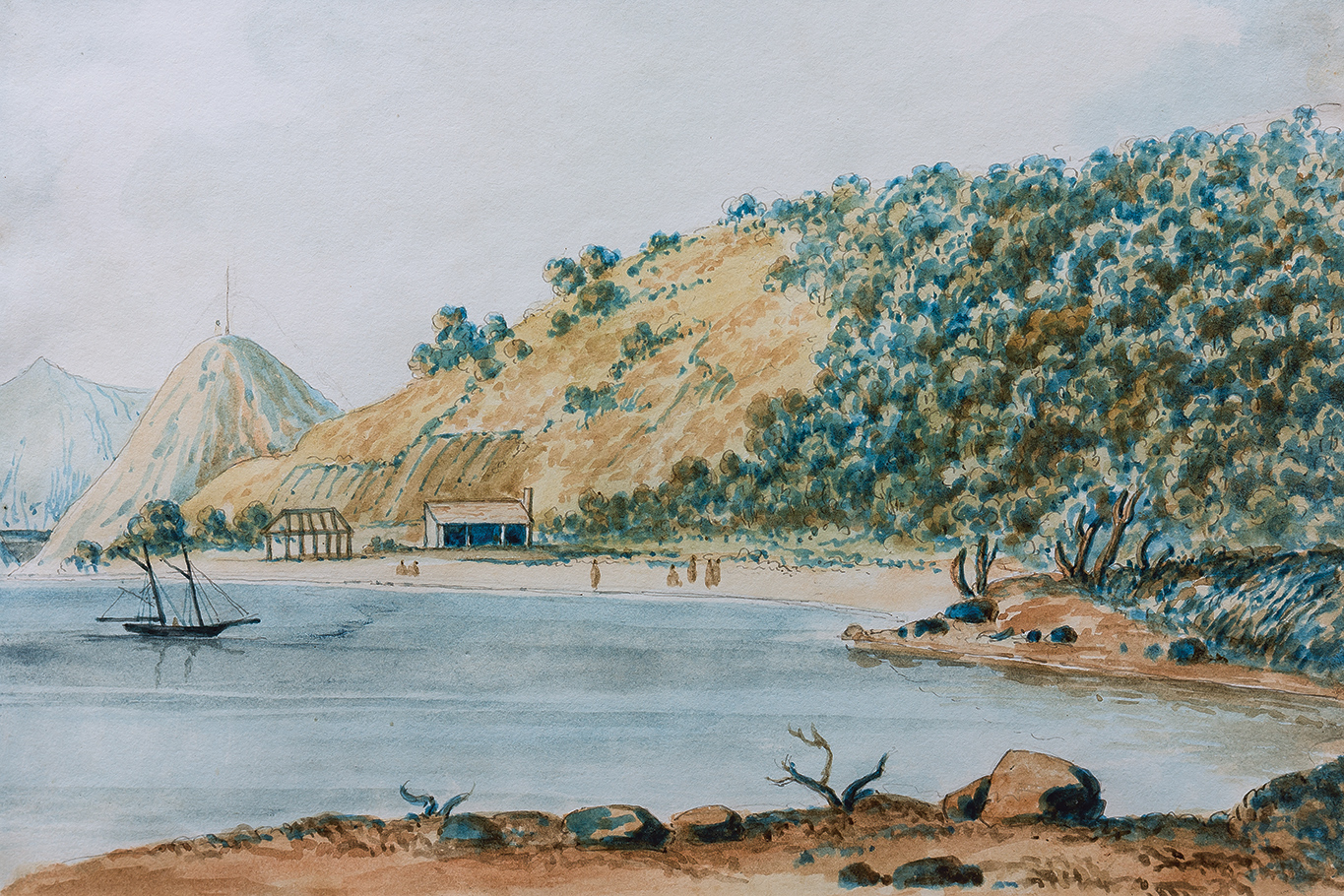MERRETT, Joseph Jenner;
Nagel’s Cove
1849
Watercolour on paper
165 x 250mm

The following text comes from the catalogue for the exhibition Tirohanga Whānui.
By the time of the artist’s arrival in Nagel Cove on Great Barrier Island in 1849 it is clear that Europeans had made their mark. The cone-shaped Mohunga bears a flagstaff. There is a completed shed-like structure near the beach and the framework of another close by. The steep hillside shows evidence of planting in rows.
In 1769, Cook had re-named the island of Aotea calling it Great Barrier Island because of the protection it offered to the Hauraki Gulf. Traditionally occupied by Ngāti Rehua and Ngāti Tai, the pre-European history of Aotea was complex and is still the subject of debate.
Great Barrier Island was attractive to Europeans because of whaling, kauri logging and copper mining, and had been visited by them since the 1820s. In 1838, the island’s Māori owners encouraged the American William Webster of Coromandel and his partners Captain Jeremiah Nagel and William Abercrombie to settle. At Nagel Cove a huge capstan was built to enable sailing ships to be lifted out of the water for the careening of their hulls. Although Webster’s subsequent land-claim was disallowed in 1844, part of the island was re-sold to Sir Frederick Whitaker who was attracted to the opportunities for copper mining, as he had been at Kawau.
Merrett is likely to have visited the Bay of Islands from Sydney during the late 1830s. By 1841, he was based in Auckland, like other artists seeking work as a surveyor. He travelled to the North a number of times as well as into the Waikato, making drawings of Māori which were made into lithographs in London in 1845. He was in Taranaki in 1851 and at Whanganui in 1852. He died in Te Whanganui-a-Tara in 1854.
Exhibition History
Tirohanga Whānui: Views from the Past, Te Kōngahu Museum of Waitangi, 15 April to 15 September 2017

